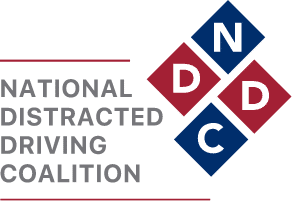WASHINGTON, D.C. — March 21, 2023— Existing and emerging technologies have great potential to reduce distracted driving, which contributes to thousands of deaths each year in the United States, according to a new National Distracted Driving Coalition (NDDC) report.
“Many people think of technology, especially smartphones and complicated infotainment screens, as a major cause of distracted driving,” says Dr. Pnina Gershon, a researcher at Massachusetts Institute of Technology and co-author of the new report. “While that’s true, other technologies can potentially help keep people focused on driving or help them avoid a crash if they are distracted.”
The new report focuses on four categories of technological intervention.
Monitoring-based prevention
Driver-monitoring systems (DMS), which use a driver-facing camera to detect distraction and drowsiness, are relatively new to the vehicle market. Still, early research from the Highway Loss Data Institute suggests vehicles equipped with the feature have fewer insurance claims. Regulators in Europe have already moved forward with requiring this feature in new vehicles.
DMS could do more than just detect distraction and issue warnings if it were integrated with other vehicle safety systems, the report’s authors point out. For example, the DMS could trigger changes in vehicle speed to reduce the chance of a conflict or prompt crash avoidance technologies to increase in sensitivity when a driver appears to be distracted.
Restriction-based prevention
Technologies that can block incoming calls and other smartphone notifications are also promising.
“Our research has found that few people make use of their cellphone’s ‘Do Not Disturb While Driving’ feature, though it’s widely available and likely already integrated into the phone in your pocket,” says Ian Reagan of the Insurance Institute for Highway Safety (IIHS). “The Coalition recently held the inaugural Do Not Disturb While Driving Day on October 20, 2022, to raise awareness of this feature and encourage more people to enable it. This simple step could help prevent a crash and save lives.”
Authors point to several research gaps that exist in this area, including understanding the specific crash reduction benefits from these features and the best ways to get drivers to consistently use them over the long term.
Crash avoidance features
Features like automatic emergency braking (AEB) and lane departure warning (LDW) are not designed specifically to address distracted driving, but they can play a critical role in warning or intervening when a driver is not paying close attention to the road. Numerous studies of insurance data and police-reported crashes have linked these features and others to crash reductions. Vehicles with pedestrian detection technology, for example, have pedestrian crash rates 27% lower than vehicles without the technology, according to IIHS.
Automated enforcement-based prevention
Many communities in the United States currently make use of cameras to enforce red-light-running and speed limit violations. Both red light and speed cameras are linked to reduced violations, crashes, and resulting injuries. Similar automated enforcement of prohibited distracting behaviors, like texting, could be highly effective.
The report also emphasizes the role of technology in preventing crashes related to intentional or unintentional misuse of partially automated driver assistance systems, sometimes referred to as “Level 2” systems. Recent high-profile crashes involving vehicles with partial automation emphasize the need for robust driver monitoring and warning systems.
Technology showcase to be held in Washington, D.C.
On April 26, 2023, NDDC will host a Technology Solutions Showcase as part of a larger two-part event in Washington, D.C. More information on the event, NDDC: Seeking Solutions to Eliminate Distracted Driving, will be announced in early April at www.usnddc.org.
To access How Technology Can Help Reduce Driver Distraction, click here.
###
Click here to access downloadable b-roll of technologies highlighted in the report.
NDDC Steering Committee Press Contacts
Nick Chabarria
Automobile Club Of Missouri
JOE YOUNG
Insurance Institute for Highway Safety
